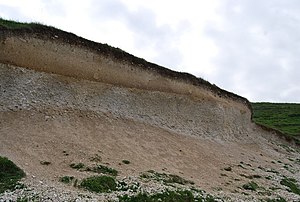Term: Calcareous
– **Zoology:**
– Used to describe anatomical structures primarily made of calcium carbonate in animals like gastropods
– Applies to structures like operculum, clausilium, and love dart
– Applies to calcium carbonate tests of Foraminifera
– Molluscs and calcareous sponges are calcareous organisms
– Reef-building corals (Scleractinia) form skeletal structures through aragonite precipitation
– **Botany:**
– Characteristic of grasslands on soils rich in calcium carbonate from chalk or limestone
– Known as calcareous grassland
– Indicates a specific type of grassland
– Thrives on soils with high calcium carbonate content
– Supports unique plant species adapted to calcareous conditions
– **Medicine:**
– Used in pathology, e.g., calcareous conjunctivitis
– Refers to calcareous metastasis and deposits
– Conditions that may require surgical removal
– Can be associated with pathological processes
– Involves the formation of calcareous structures in the body
– **Geology:**
– Applied to sediment, sedimentary rock, or soil with high calcium carbonate content
– Formed from calcite or aragonite
– Found in limestone and lime materials
– Associated with the formation of certain types of rocks
– Plays a role in the geological composition of various regions
– **Marine Sediments:**
– Typically found in shallow water close to land
– Marine organisms precipitate calcium carbonate in shallow water ecosystems
– Calcareous sediments may include calcareous ooze
– Presence of biogenous material like coccolithophores and foraminifera
– Formation influenced by ocean depth and water saturation levels
Calcareous (/kælˈkɛəriəs/) is an adjective meaning "mostly or partly composed of calcium carbonate", in other words, containing lime or being chalky. The term is used in a wide variety of scientific disciplines.

